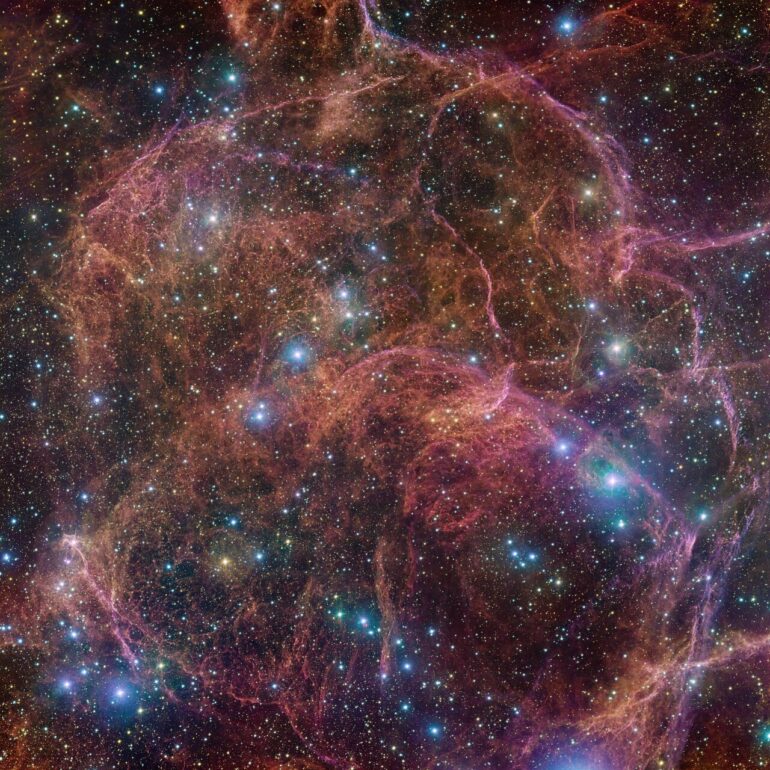A spooky spider web, magical dragons or wispy trails of ghosts? What do you see in this image of the Vela supernova remnant? This beautiful tapestry of colors shows the ghostly remains of a gigantic star, and was captured here in incredible detail with the VLT Survey Telescope, hosted at the European Southern Observatory’s (ESO’s) Paranal site in Chile.
The wispy structure of pink and orange clouds is all that remains of a massive star that ended its life in a powerful explosion around 11,000 years ago. When the most massive stars reach the end of their life, they often go out with a bang, in an outburst called a supernova. These explosions cause shock waves that move through the surrounding gas, compressing it and creating intricate thread-like structures. The energy released heats the gaseous tendrils, making them shine brightly, as seen in this image.
In this 554-million-pixel image, we get an extremely detailed view of the Vela supernova remnant, named after the southern constellation Vela (The Sails). You could fit nine full Moons in this entire image, and the whole cloud is even larger. At only 800 light-years away from Earth, this dramatic supernova remnant is one of the closest known to us.
As it exploded, the outermost layers of the progenitor star were ejected into the surrounding gas, producing the spectacular filaments that we observe here. What remains of the star is an ultra-dense ball in which the protons and electrons are forced together into neutrons—a neutron star. The neutron star in the Vela remnant, placed slightly outside of this image to the upper left, happens to be a pulsar that spins on its own axis at an incredible speed of more than 10 times per second.
This image is a mosaic of observations taken with the wide-field camera OmegaCAM at the VLT Survey Telescope (VST), hosted at ESO’s Paranal Observatory in Chile. The 268-million-pixel camera can take images through several filters that let through light of different colors. In this particular image of the Vela remnant, four different filters were used, represented here by a combination of magenta, blue, green and red.
The VST is owned by The National Institute for Astrophysics in Italy, INAF, and with its 2.6-meter mirror it is one of the largest telescopes dedicated to surveying the night sky in visible light. This image is an example from such a survey: the VST Photometric Hα Survey of the Southern Galactic Plane and Bulge (VPHAS+). For more than seven years, this survey has mapped a considerable portion of our home galaxy, allowing astronomers to better understand how stars form, evolve and eventually die.
Citation:
ESO captures the ghost of a giant star (2022, October 31)



